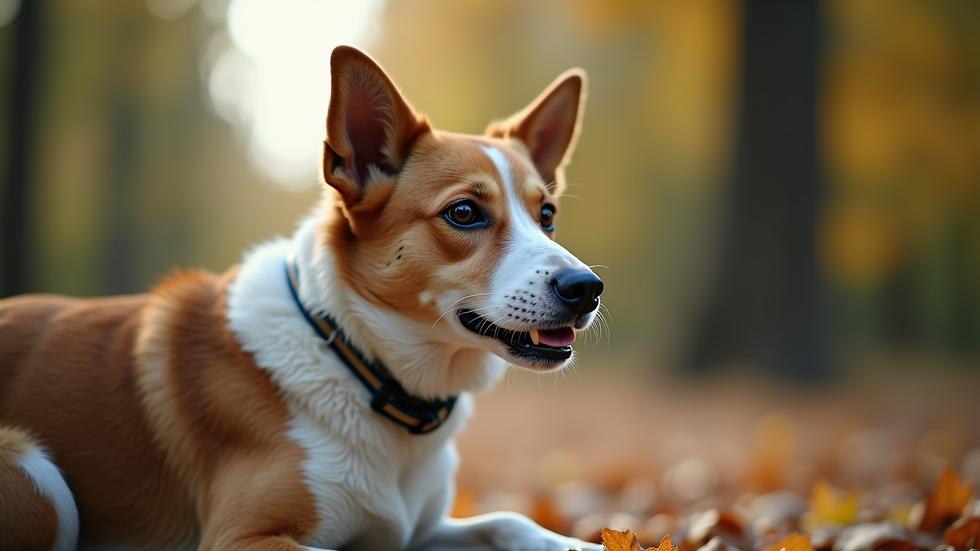the Advantages of Scent Detection Training in Low-Light Conditions
- k9nose2adventure
- Oct 1
- 3 min read
Scent detection training is a fascinating and essential aspect of working with dogs, particularly in fields such as search and rescue, law enforcement, and wildlife conservation. While most training occurs in well-lit environments, there is a growing recognition of the benefits of conducting scent detection training in low-light conditions. This blog post will explore the advantages of scent detection training in the dark, highlighting how it can enhance a dog's skills, improve handler-dog communication, and prepare teams for real-world scenarios.
Enhancing Natural Instincts
Training in low-light conditions allows dogs to rely more on their natural instincts and olfactory capabilities. In darkness, visual cues are minimized, forcing dogs to depend on their sense of smell to navigate their environment. This reliance on scent can lead to a more profound understanding of their capabilities and enhance their overall performance.
By focusing on scent alone, dogs can develop a stronger connection to their training, leading to improved accuracy in detecting specific scents. This is particularly beneficial for working dogs who may need to perform in various environments, including nighttime operations.
Building Confidence
Low-light training sessions can significantly boost a dog's confidence. When dogs successfully locate scents in challenging conditions, they gain a sense of accomplishment. This confidence translates to better performance in real-world situations, where they may encounter similar low-light scenarios.
Handlers can also benefit from this training, as they learn to trust their dog's instincts and abilities. This mutual trust fosters a stronger bond between the handler and the dog, which is crucial for effective teamwork in high-pressure situations.
Simulating Real-World Scenarios
Many real-world situations, such as search and rescue missions or law enforcement operations, occur in low-light conditions. By incorporating scent detection training in the dark, teams can better prepare for these scenarios.
Training in low-light environments allows handlers to simulate the challenges they may face during actual missions. This preparation can lead to more effective and efficient operations, ultimately saving lives and resources.
Improving Focus and Concentration
Training in low-light conditions can help improve a dog's focus and concentration. With fewer distractions from visual stimuli, dogs can hone in on the scent they are tasked with finding. This heightened focus can lead to faster and more accurate scent detection.
Handlers can also benefit from this increased concentration, as they learn to communicate more effectively with their dogs. This improved communication is essential for successful scent detection, especially in high-stress situations.
Encouraging Adaptability
Scent detection training in the dark encourages dogs to adapt to various environments and conditions. This adaptability is crucial for working dogs, as they may encounter different terrains, weather conditions, and levels of visibility during their careers.
By exposing dogs to low-light training, handlers can help them develop the skills necessary to perform effectively in diverse situations. This adaptability can be a game-changer in real-world operations, where conditions can change rapidly.
Strengthening Handler Skills
Handlers also benefit from scent detection training in low-light conditions. As they learn to navigate and communicate with their dogs in the dark, they develop essential skills that can enhance their overall effectiveness as a team.
This training can help handlers become more attuned to their dog's body language and behavior, allowing them to make better decisions during operations. Improved handler skills can lead to more successful missions and a stronger bond between the handler and the dog.
Image Placeholder

Fostering Teamwork
Scent detection training in low-light conditions fosters teamwork between the handler and the dog. As they work together to locate scents, they develop a deeper understanding of each other's strengths and weaknesses.
This teamwork is essential for successful operations, as both the handler and the dog must rely on one another to achieve their goals. By training in low-light conditions, teams can strengthen their bond and improve their overall performance.
Conclusion
Scent detection training in low-light conditions offers numerous benefits for both dogs and their handlers. From enhancing natural instincts and building confidence to simulating real-world scenarios and improving focus, the advantages are clear.
By incorporating low-light training into their routines, teams can better prepare for the challenges they may face in the field. As the world of scent detection continues to evolve, embracing the benefits of training in the dark will undoubtedly lead to more effective and efficient operations.
Image Placeholder

In conclusion, the advantages of scent detection training in low-light conditions are significant and multifaceted. By enhancing skills, building confidence, and fostering teamwork, this training approach can lead to improved performance in real-world scenarios. As handlers and dogs continue to work together in various environments, the importance of low-light training will only grow, unlocking new possibilities for scent detection teams everywhere.
Image Placeholder




Comments